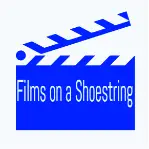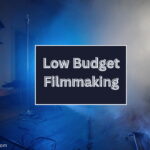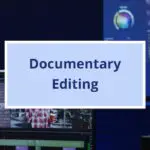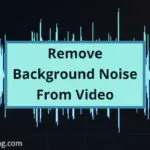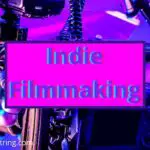Discover what sound design in film is, and why it’s such an essential part of successful filmmaking.
What is Sound Design in Film?
When watching a film, have you ever wondered how the sound effects, background music, and dialogue come together to create an immersive experience? This is where the art of sound design comes into play.
Let’s explore the importance of sound design in film and delve into the role of sound designers in the film industry.
Definition of Sound Design
Sound design in film refers to the process of creating and manipulating audio elements to enhance the storytelling and emotional impact of a film. It involves the creation and integration of sound effects, music, dialogue, and other audio elements to create a cohesive and immersive soundscape that complements the visual elements of productions for film and television.
Importance of Sound Design in Film
Sound design is a crucial aspect of film post-production that can greatly enhance the overall quality and impact of a film.
Music and sound effects, along with clear dialogue and intentional use of silence, can help to create a sense of realism, build tension and suspense, and evoke emotional responses from the audience.
Without effective sound design, a film can feel flat and unengaging.
Elements of Sound Design
Sound design in film encompasses various elements that work together to create a cohesive and immersive auditory experience.
One of the key lessons to be learned from successful sound design is the importance of attention to detail. Every sound effect, piece of music, and line of dialogue must be carefully crafted to create a cohesive and immersive soundscape.
Some key elements include:
Foley Effects and Sound Effects
Foley effects are sounds recorded in a studio to mimic everyday actions, while sound effects are pre-recorded sounds used to enhance the storytelling.
Foley is the process of creating sound effects using everyday objects and materials. This can include anything from the sound of a door closing to the rustling of leaves.
Sound effects are a key component of sound design, used to create a range of sounds that are not present in the original recording. These can include anything from the sound of footsteps to the roar of a monster.
Dialogue and ADR
Dialogue is the spoken words of the characters, while ADR (Automatic Dialogue Replacement) is the process of re-recording dialogue in a studio for clarity or to fix technical issues.
Dialogue editing involves the manipulation of recorded dialogue to ensure that it is clear and understandable. This can include adjusting the volume, removing background noise, and adding effects to enhance the clarity of the dialogue.
Music and Score
Music and score enhance the emotional impact of a film. Score refers to the original music composed specifically for a film, while music can include existing songs or tracks.
Music composition involves the creation of original music for a film. This can include everything from a simple piano melody to a full orchestral score.
Mixing and Mastering
Mixing and mastering involves the final stage of sound design, where all of the audio elements are combined and balanced to create a cohesive and immersive soundscape.
All these elements, when used effectively, contribute to the overall cinematic experience and help bring the film to life.
Software and Hardware Tools
Sound designers use a variety of techniques and tools to bring the auditory elements of a film to life.
They rely on software and hardware tools like digital audio workstations, sound libraries, and synthesizers to create and manipulate sounds in post-production. These tools and techniques are crucial in shaping the sound design of a film and enhancing its storytelling.
Learning about Sound Design
Some tips and tricks from professional sound designers include:
- Experiment with different sounds and effects to find the perfect fit for each scene.
- Pay attention to the details, such as the sound of footsteps or the rustling of leaves, to create a sense of realism.
- Use silence as a tool to create tension and suspense.
- Collaborate closely with the director and other members of the production team to ensure that the sound design complements the visual elements of the film.
Sound Design Careers in the Film Industry
If you’re thinking about a career in the film industry, there are several types of sound design jobs needed for most productions. So will combine several roles into one, while others with larger budgets will employ a specialist freelancer for each element of the sound design process.
A foley artist, for example, creates sounds by copying the movement of actors on the screen. A foley mixer records these sounds, collabroating with the foley artist and the foley editor. But on some productions, one person might perform all these roles themselves.
The sound design team who worked on The Hobbit are a great example of several specialisms coming together to create a meticulous, impactful and creative sound design for film. They demonstrated some of the best sound design of that era.
Sound design can be a challenging and rewarding career path. Some of the challenges include the need to constantly stay up-to-date with new technologies and techniques, as well as the pressure to meet tight deadlines.
However, the rewards of creating a successful and immersive soundscape can be incredibly satisfying and a successful sound designer may run a very profitable business.
Education and Training
To become a sound designer, it is important to have a strong foundation in audio production and design. Many universities and colleges offer associate or bachelor’s degrees in audio production or sound design, which can provide a solid foundation for a career in sound design.
Building a Portfolio
Building a portfolio of work is essential for aspiring sound designers. This can include anything from student projects to freelance work. A strong portfolio can help to showcase your skills and experience to potential employers.
Working with Directors and Producers
In sound design, collaboration and communication play a crucial role in creating a cohesive and impactful final product. Sound designers work closely with directors and producers to understand their vision and goals for the film’s sound. Regular meetings, discussions, and feedback sessions help ensure that the sound design aligns with the overall creative direction of the project.
Collaborating with other Departments
Sound designers also collaborate with other departments, such as cinematography, editing, and visual effects, to enhance the film’s storytelling through audio.
They work together to synchronize sound elements with the visuals, create seamless transitions, and achieve a harmonious blend of different audio components.
Effective communication and coordination among departments are essential for a successful sound design.
Finding Work in the Industry
Finding work in the sound design industry can be challenging, but there are a number of resources available to help aspiring sound designers. These can include job boards, industry events, and networking opportunities.
The Impact of Sound Design on Storytelling
Sound design plays a crucial role in the overall cinematic experience, enhancing storytelling in several ways:
Creating Atmosphere and Immersion:
Adding sound effects, ambient noises, and background music helps to create a specific atmosphere and immerse viewers in the world of the film.
Enhancing Emotions and Tension:
Sound can evoke emotions and increase tension by utilizing techniques such as dynamic range, sound layering, and the strategic use of silence.
Building a Sense of Realism:
Effective sound design can make the on-screen world feel more realistic and believable, using carefully selected sounds to replicate real-life environments and events.
By artfully utilizing sound elements, filmmakers can elevate their storytelling and enhance the audience’s emotional engagement with the film.
Sound Design in Different Film Genres
By understanding the role of sound design in different film genres, filmmakers can effectively use sound to enhance the storytelling and create a more immersive and engaging cinematic experience.
The Role of Sound Design in Action Films
In action films, sound design plays a crucial role in enhancing the intensity and excitement of the on-screen action. This genre often relies on dynamic and immersive sound effects, such as explosions, gunfire, and intense music, to create a thrilling experience for the audience.
Sound Design for Documentary Filmmaking
Documentary filmmaking can be observational, looking back at historic events and people, or analyse social issues. It’s a form of filmmaking which takes real events and creates a story arc out of them.
So the sound design for documentaries needs to reflect the tone of events on screen and the story being revealed.
The Subtle Use of Sound Design in Dramas
In dramas, sound design is more understated, focusing on creating a realistic and immersive environment for the audience. Subtle ambient sounds, delicate audio cues, and well-balanced dialogue are key elements that help to enhance the emotional impact of the story.
Sound Design Techniques in Horror Films
In horror films, sound design is used to build tension and create a sense of fear and unease. This genre often relies on atmospheric sounds, eerie music, and sudden, jarring sound effects to elicit a strong emotional response from the audience.
The Future of Sound Design in Film
Emerging Technologies and Trends
As technology continues to advance, the future of sound design in film looks promising. Here are some emerging technologies and trends that will shape the future of sound design:
- Spatial Audio: With the rise of immersive technologies like virtual reality (VR) and augmented reality (AR), spatial audio will become increasingly important in creating realistic and immersive audio experiences for viewers.
- Artificial Intelligence (AI): AI has the potential to revolutionize sound design by automating repetitive tasks and generating high-quality sound effects. AI-powered tools can analyze footage, identify key audio elements, and suggest appropriate sound effects, saving time and effort for sound designers.
- Interactive Soundtracks: Interactive soundtracks allow viewers to customize their audio experience by adjusting the volume and balance of different sound elements. This personalized approach enhances viewer engagement and creates a more immersive viewing experience.
- Haptic Feedback: Haptic feedback technology enables viewers to feel the vibrations and movements on-screen through their devices. Integrating haptic feedback with sound design can enhance the emotional impact of scenes and create a more visceral and engaging experience.
- Dynamic Mixing: Dynamic mixing techniques enable sound designers to create dynamic and adaptive soundscapes that respond to the viewer’s actions or the narrative. This approach enhances the storytelling and creates a more immersive and interactive cinematic experience.
The future of sound design in film is undoubtedly exciting, with emerging technologies and trends pushing the boundaries of what is possible.
As filmmakers and sound designers embrace these advancements, audiences can look forward to more immersive and captivating audio experiences in the years to come.
What is Sound Design in Film?
Sound design plays a crucial role in creating memorable films. The sound designer’s job is careful construction of a soundtrack encapsulating film music, dialogue, sound effects, and even silence.
Great sound design enhances the storytelling experience by adding depth and emotion to the visuals. The careful selection of sound effects, music, dialogue, and ambience can transport the audience into the world of the film and evoke powerful emotions. Sound design the art form that is sometime overestimate but should not be overlooked, as it contributes significantly to the overall impact and success of a film.
More for Filmmakers
- Low Budget Filmmaking: More for Less
- Lighting Department Film Roles
- Shooting An Interview
- Documentary Editing
- What is Sound Design in Film?
- Color Grading for Documentary Series or Film
- Film Set Etiquette: Professional Behaviour on Set
- Observational Documentaries And Their Impact
- Essential Skills for Film Industry Professionals
- How to Create a Storyboard in 6 Simple Steps
- What Makes a Film Successful
- Breaking into the Film Industry without Experience
- Sports Documentary Filmmaking
- How to Create a Storyboard Using Sticky Notes
- Remove Background Noise From Video
- Why Do Filmmakers Use Clapper Boards?
- Indie Films
- Indie Filmmaking
- What is Post Production in Film
